One of the team at Energy Voice, a sister publication of The Press and Journal, has described being on a free fall launch of a lifeboat as a “hell of a thrill”.
The chance to experience its plunge into the sea first hand developed from an invitation from Aberdeen energy services firm AIS Survivex to try out a new lifeboat simulator.
AIS Survivex invested an estimated £850,000 in the new kit for its Dyce facility.
Read on to see how Energy Voice reporter Ryan Duff got on in the simulator and then being launched in a real lifeboat (video below).
Free-fall lifeboat simulator
AIS Survivex training coordinators can tailor the learning experience to the person in the boat, whether that be creating new scenarios, introducing helicopters flying overhead, training at night or even altering the colours of vessels and rigs to match the trainee’s company.
The new technology can simulate a range of weather conditions all the way up to gale force eight.
We have had people feeling queasy in there as well, because it will still roll and move as a normal lifeboat would, so in that respect it is very immersive. It’s the future of training.”
George Masson, marine team leader, AIS Survivex.
Those who have already used the new simulator for their refresher training have sung its praises, according to AIS Survivex.
Marine team leader George Masson said: “All the feedback we’ve had has been positive – they all really enjoy it and they all think it’s very realistic.
“This is coming from people that have only ever been in a boat in calm conditions. They won’t have been in a boat in rough weather because, obviously, we don’t train then.
“Unless they’ve actually been involved in an evacuation in the past, they’re not going to have to use the boat in a real situation.”
The simulation takes them from an alarm sounding on the platform through to offloading people or rescuing someone from the water.
AIS Survivex’s Dyce facility has three simulators; one is a mobile desktop sim that can be taken offshore and set up to do the same exercise as a free fall simulator but without the motion.
There is also a “twin fall” simulator, which is also motion-free and based on a lifeboat that is lowered on two wires into the water. The third simulator adds motion and delivers a close-to-real-life free fall experience.
Explaining how the latest addition, Mr Masson said: “Basically, what we have is a full lifeboat simulator… based on a free-fall system so it is designed to launch without any wires lowering it into the water.
“It’s a very good piece of equipment – it simulates the weather handling of a lifeboat to a very high percentage. It’s very good at what it does and makes the simulation very realistic as far as the delegates are concerned.
“All the guys coming on this course are effectively on a refresher course so nobody will come here having never been in a boat before. They’ve all done a lifeboat course in a proper lifeboat out on the water, whether that be out in the harbour or at sea.”
He added: “We have had people feeling queasy in there as well, because it will still roll and move as a normal lifeboat would, so in that respect it is very immersive. It’s the future of training.”
Taking the plunge in the real thing
After using the new simulator Energy Voice’s intrepid reporter was invited to experience the real thing, going on board a free fall lifeboat at Aberdeen harbour.
The boat fell 33ft in high tide – about one-third of the height an offshore free fall lifeboat plummets during an evacuation but still enough to “put your stomach in your throat”, the reporter said later.
He added: “That’s the part the simulation can’t prepare you for. The way the boat handles on the water translates perfectly to the motion simulator.
“However, the experience of falling through the air and hitting the water is totally unique to the real thing. It’s a hell of a thrill that one.”
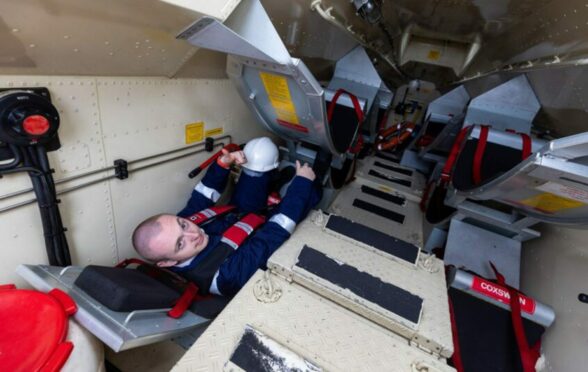
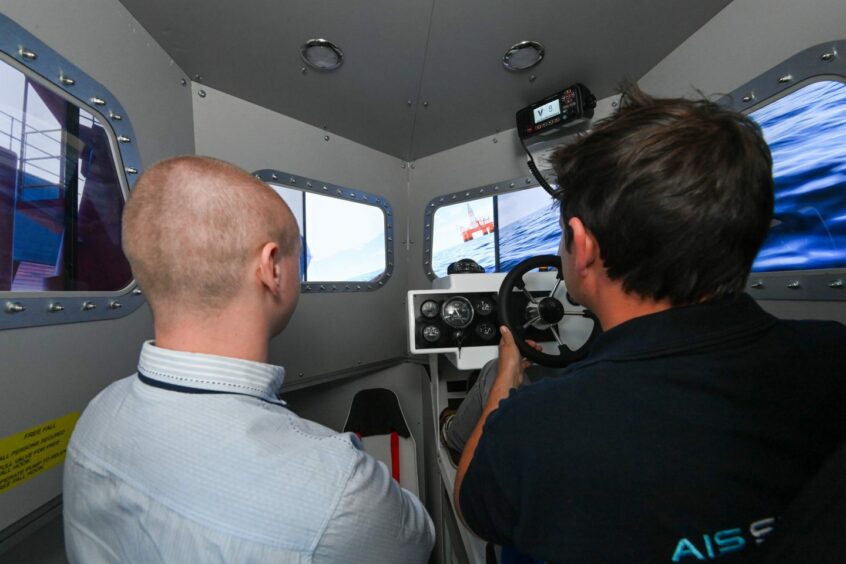
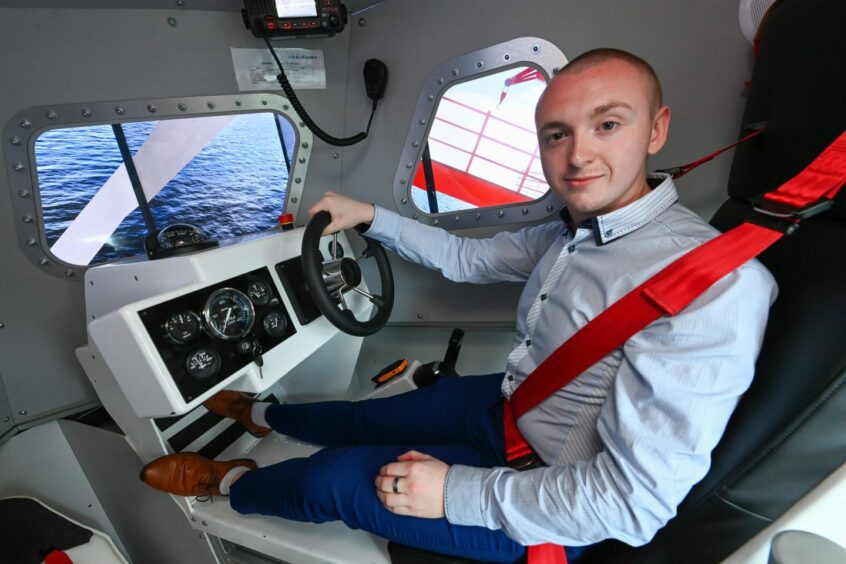
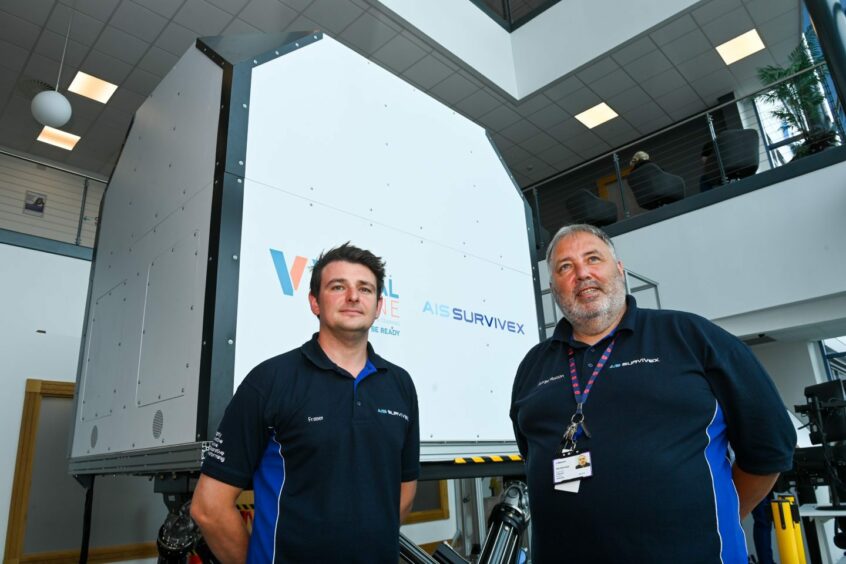
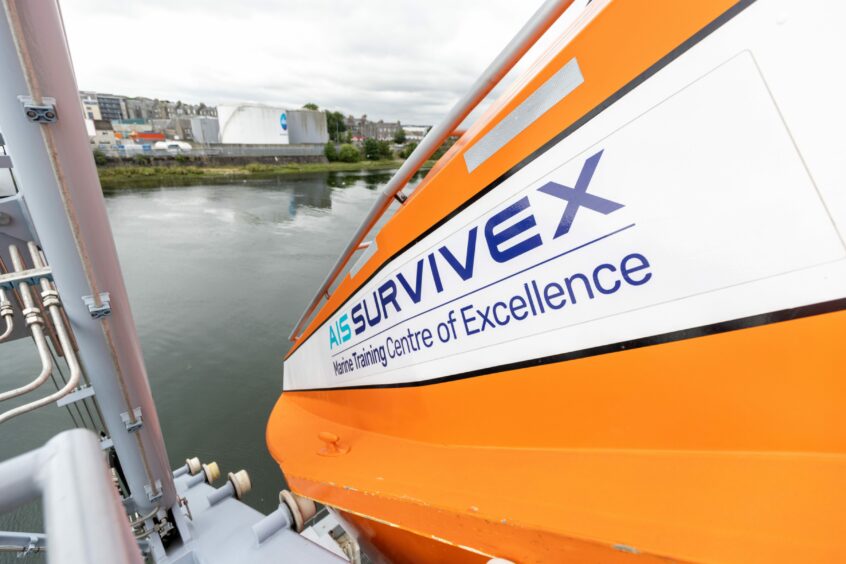
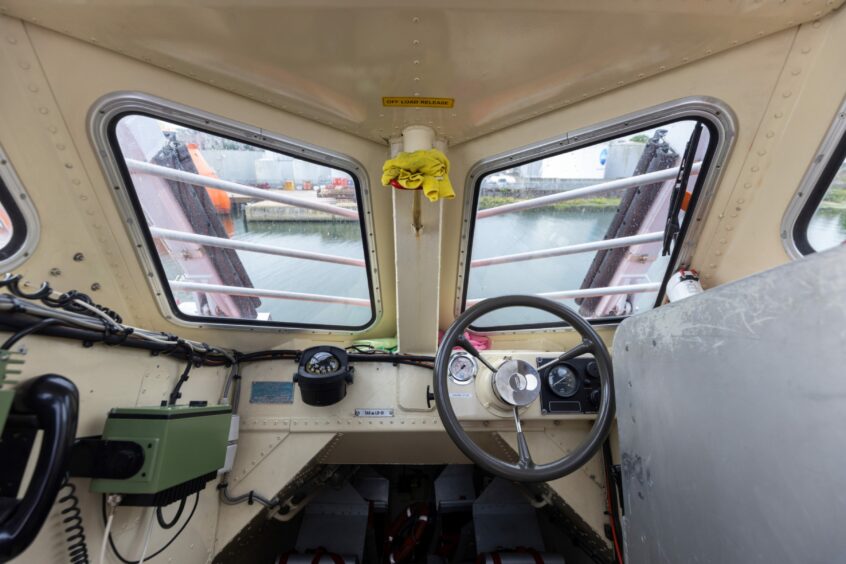
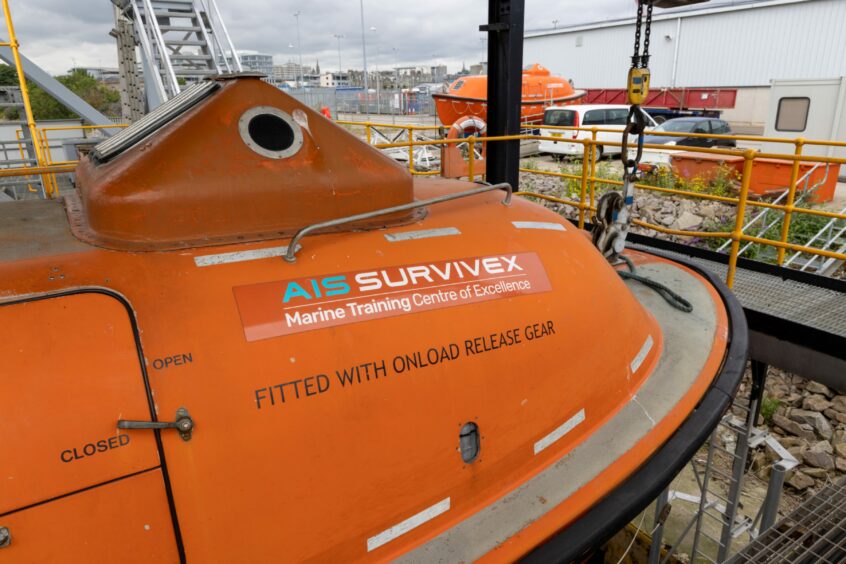
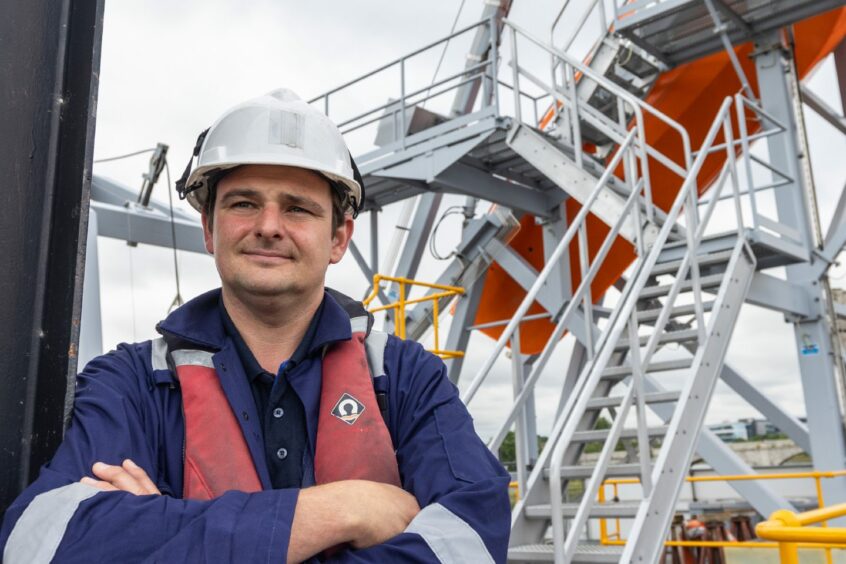
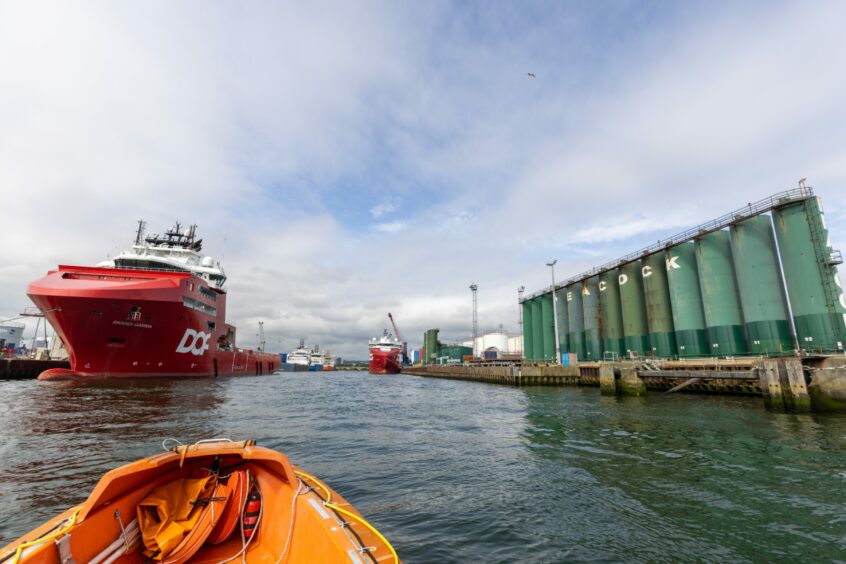
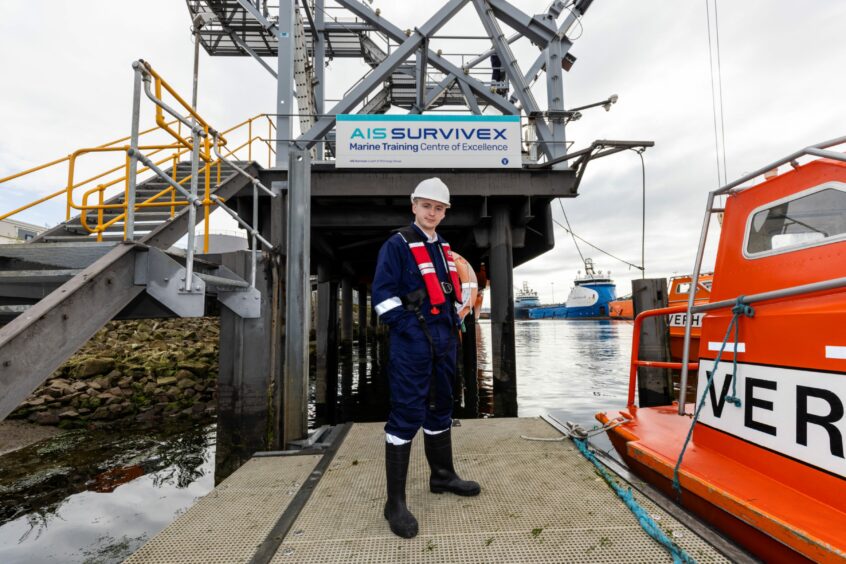
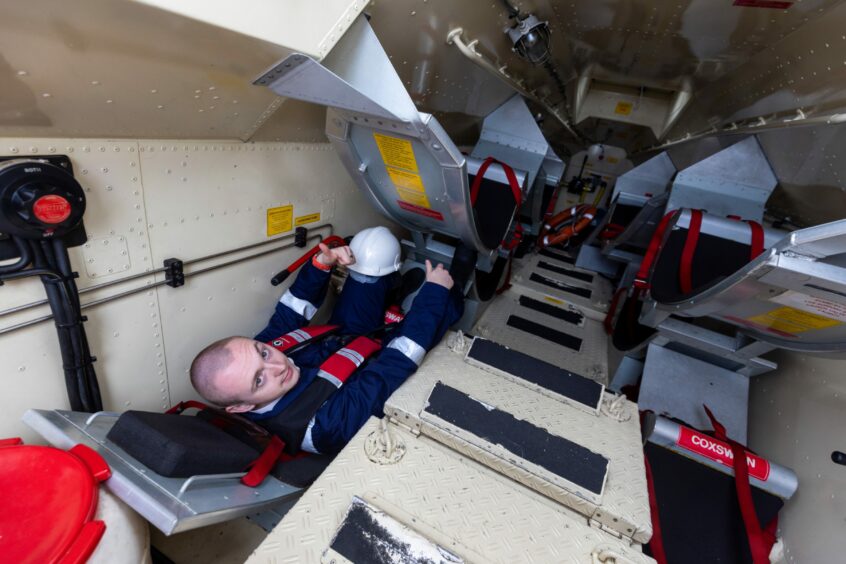
Conversation